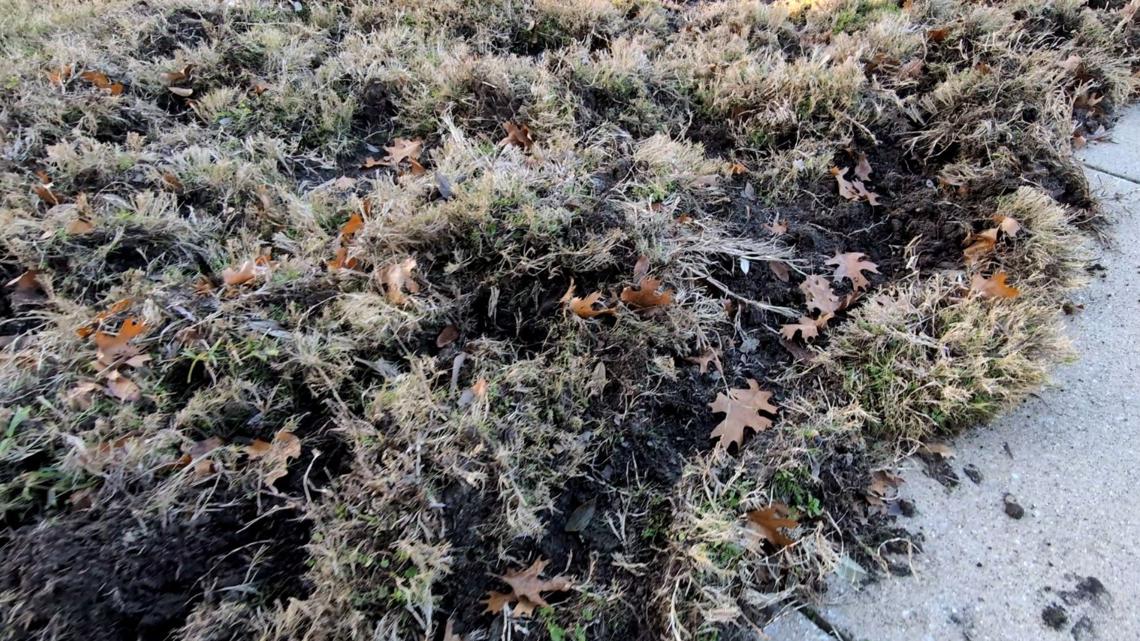After weeks of chaos and uprooted lawns, a hog trap was built Tuesday night to end a feral swing rampage that has left homeowners and a nearby school reeling.
IRVING, Texas — For weeks, residents along and around Harris Court in Irving have watched helplessly as feral hogs transformed their once-pristine lawns into battlegrounds.
These wild invaders, sometimes arriving in a groups of possibly 20, have been tearing through properties and wreaking havoc in the neighborhood since December.

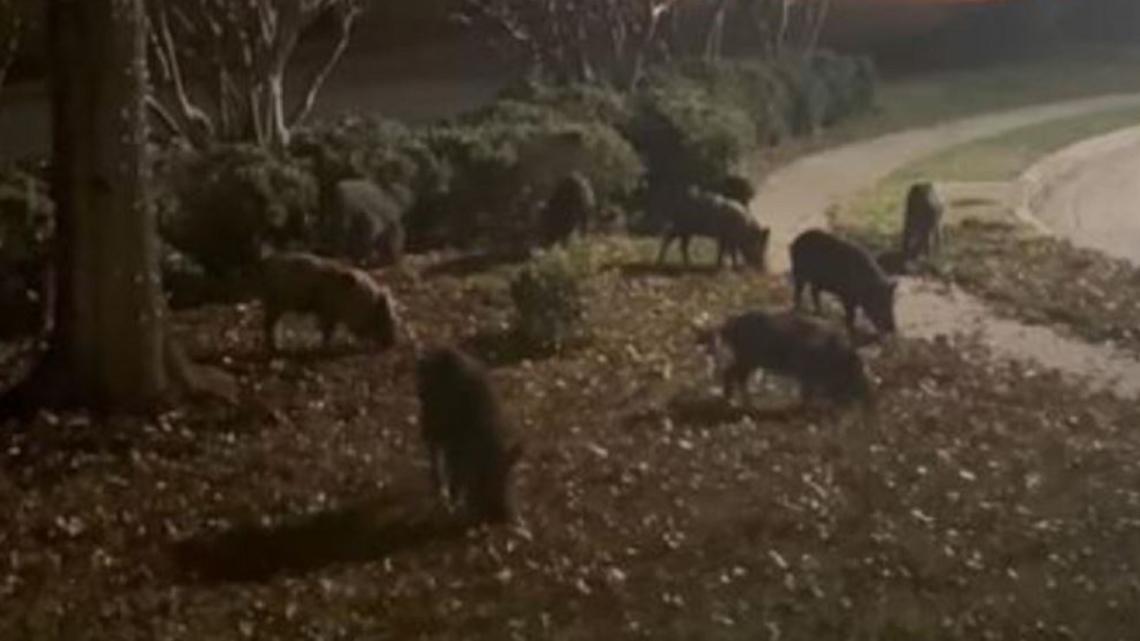
The lawncare agony might soon be over, though. A hog trap and bait were set up in Champions Park Tuesday night to capture the invasive swine and end their tyranny.
“Every time I come out here, it seems like there’s a new area that these hogs have uprooted,” said homeowner Audeline Harris. “I just wanted my yard to look nice… now, look — look at this.” Harris spent around $5,000 landscaping her yard before the hogs ruined everything.

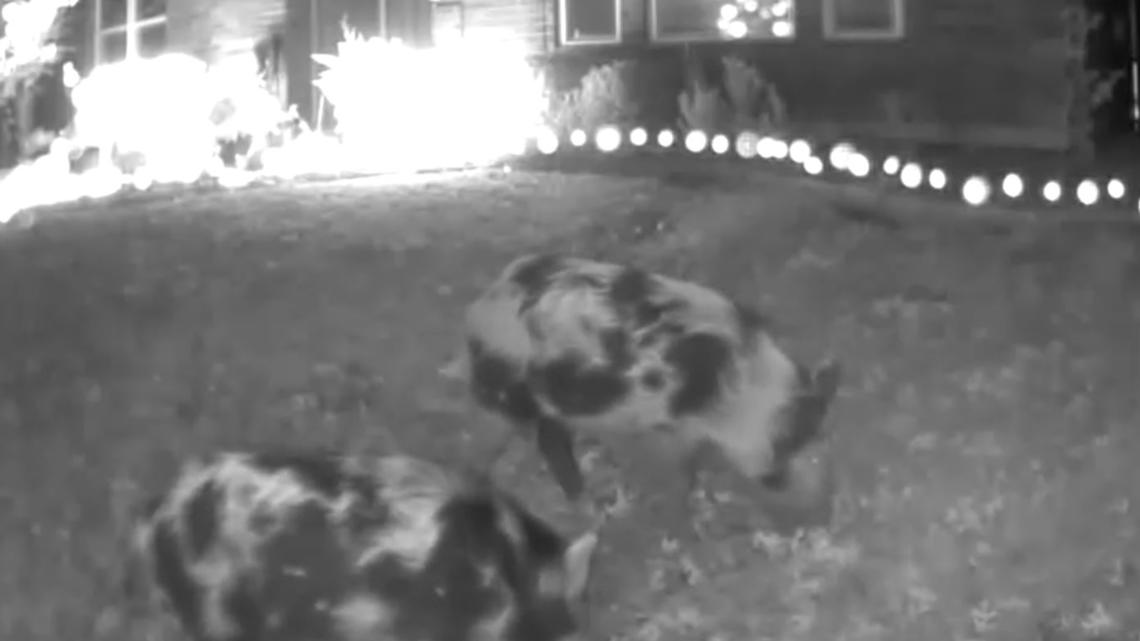
Harris isn’t alone in her frustration. At least five other properties on her street have been trampled, including nearby Barbara Bush Middle School, where the Carrollton-Farmers Branch ISD estimated $5,000 worth of damage.

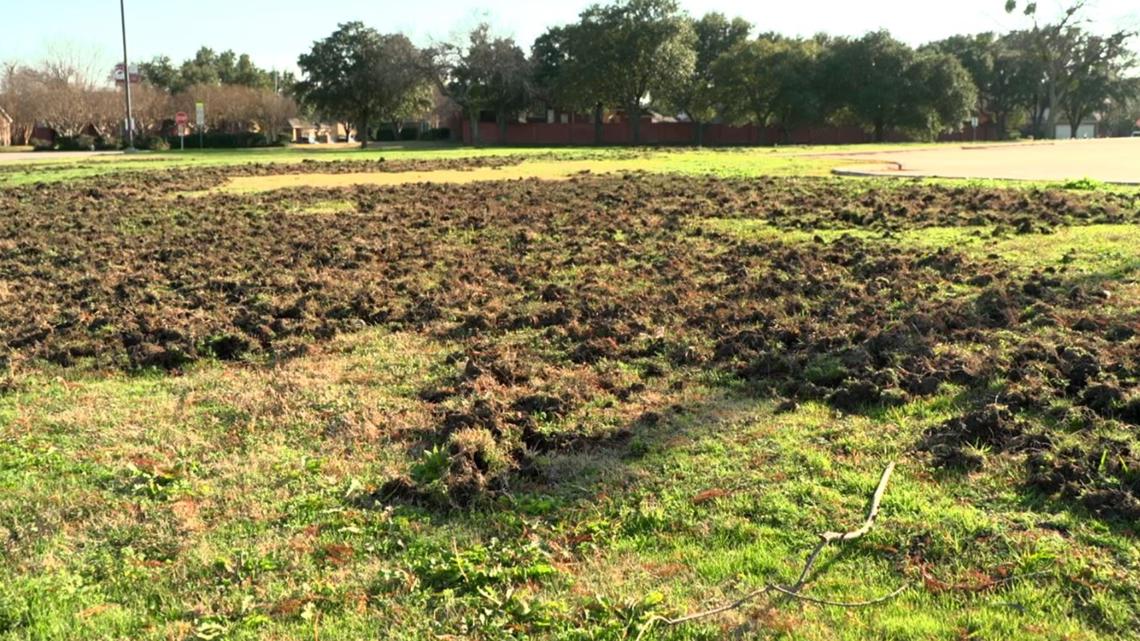
“They don’t like cayenne pepper,” Harris added, explaining her creative if not desperate, measures to deter the hogs. She peppered her flower beds, hoping to outwit the intruders, and has called on the city to compensate herself and other residents for damages.
Feral hogs: A costly plague
Feral hogs are no ordinary nuisance. Known for their insatiable appetite and destructive rooting behavior—digging into the earth for food—they leave devastation in their wake. In Texas alone, these invasive creatures cause an estimated $400 million in damage yearly. This includes torn-up lawns, ravaged crops, and property destruction across urban and rural areas.
Their prolific breeding only compounds the problem: a single sow can produce two litters annually, each with six to eight piglets. Once they settle in, these creatures are complex to remove.
The trap is set
In a long-awaited response, the City of Irving and state wildlife experts are stepping up. A game camera recently captured hogs sneaking into the neighborhood through a walking trail opening from a dense wooded area, pinpointing their entry point.

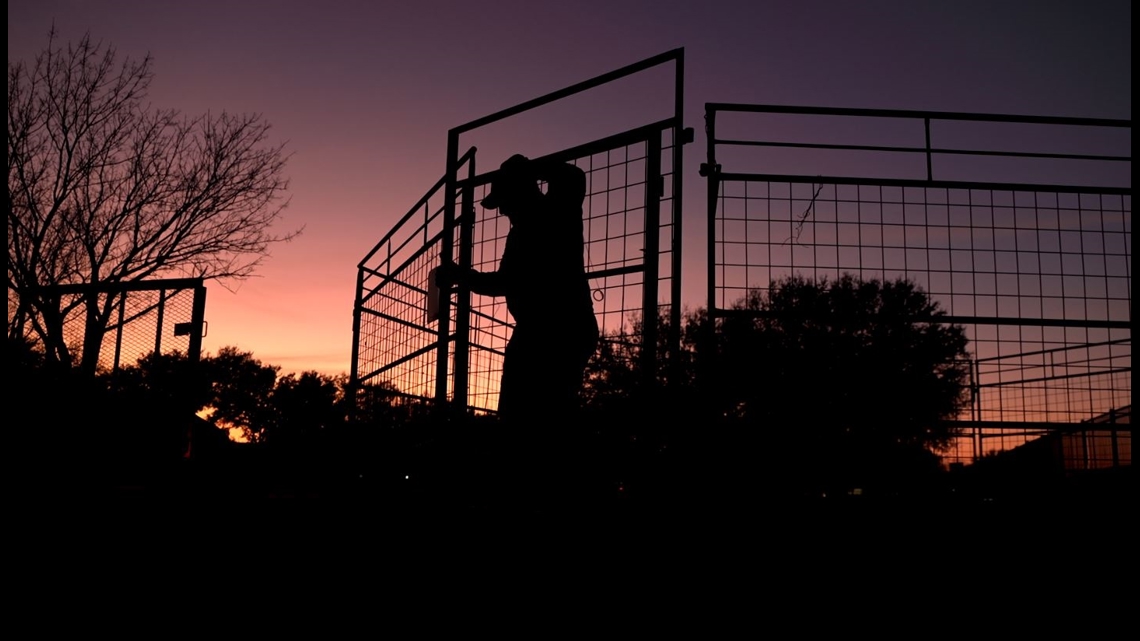
Now, a high-tech trap has been set in the area, baited with corn to entice the swine. The trap, equipped with cameras, will allow officials to remotely close the door once the hogs are inside. Residents hope this effort will be the decisive blow that ends their ongoing hog nightmare.
For Harris and her neighbors, this intervention comes not a moment too soon. “Every homeowner who’s had to endure this type of damage feels the same way,” she said, tired of fighting a losing battle against the relentless swine invasion.
The bigger picture
Feral hogs pose a statewide challenge. Texas Parks and Wildlife describes them as “opportunistic omnivores” that will devour crops, lawns, garbage and even livestock feed. Efforts to control their population range from licensed hunts on public land to helicopter shooting, but the pigs’ adaptability and sheer numbers often outpace these strategies.
For now, Irving’s residents anxiously await the results of the set trap, hoping that the end of their hog ordeal is finally in sight.

